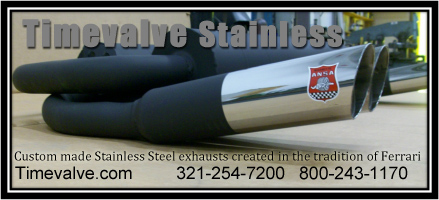Upholstery VIII

5/2/03
Upholstery VIII: Even More Door!

Last week, I mentioned some details that needed to be corrected on my door panels. These details will hopefully make the difference between a good upholstery job and a great one. The top portion of the door panel has a separate leather trim that finishes off the panel. This panel is capped off by a steel molding that is painted body color. The bottom of the leather trim strip folds over the door panel and is glued into place behind the panel. Thin leather piping will wrap around the whole panel when the door is complete. The problem is this folded over piece of leather forms a slight ridge so when the piping is attached, you’ll see a bump. This detail, although minute, is something that Frank does not like about my panels.

This ridge is especially noticeable on the bottom portion of the door panel that has a similar leather covered trim piece.

Frank showed me a couple of techniques to make this ridge disappear. The tool in this picture is a “skife.”(The verb is “to skive” but I think tool is a skife. Please correct me if I’m wrong.) If holds a special razor blade that is bent by the holder. It shaves thin layers of leather from the back side to make the leather thinner. You use it much like a straight razor. For the pieces that I already glued, I used this knife to thin out out the leather that needs to be bent over the panel. I used a piece of mirror to work on so the cuts were even and smooth.

For the pieces that were not attached, I used Frank’s “Skiving” (?) machine that automatically shaves about one inch wide strips of suede off the back of the leather. I managed to shave the few pieces I needed, but I was scared to death of this menacing machine. I’m sure it could “skive” my fingers just as easily as my leather if I put them in the wrong place! I’ll need to get some more “seat time” on this machine to get comfortable because I’ll need to thin some more leather soon (see further down).

Another technique to hide the ridge was to notch the panel where the ridge would fold over.

Here you can see where the leather has been thinned and cut, and the panel notched and ready for gluing.

By the end of the day, I corrected the four corners of last week’s door panels, and did the four of the other panel.

Here’s the “before” picture again to see the difference.

You can really see how nice and flat the edge of the door panel is on this profile.

Like I said, I completed the second door panel as well, but before I could even get to the “skiving,” I had to mount the door pockets and check them for fit. The details on these doors are endless!

Speaking of door panels, these aluminum pieces are decorative pieces that really serve not apparent function except scuff real well as you get out of the car. They mount in the front of the door panel, and the hole is for access to the crank mechanism inside the door if your car was equipped with electric doors. There’s a small chrome decorative plug that goes in this hole, but I only have one of them. My panels are pretty scuffed up, and I know there are some GTE owners out there that have had trouble locating replacement panels, but I’m hot on a lead from a conversation I had with a 330GT 2+2 owner. Paul is in the process of restoring his Ferrari, and told me he found a real close replacement for the aluminum panels found on his interior, and that they are probably the same for my car, but in a different shape.

The 330 door uses longer pieces that run the whole length of the door, but I was very excited to see these pictures.

The close up picture was even more promising. O.K., where do these panels come from? If you live in America, and been to car shows and auctions, then you’ve probably seen the car that wears this trim piece. Yes, it’s an American car. Can you guess which car it is? I promise to post the answer on the next journal entry!!!

In preparation of the aluminum panels, I tried removing the leather from the backing plates. One of them came off cleanly, but the other one will have to be sanded off as the leather has hardened, and is peeling off in little pieces. The leather on these pieces is very thin, so all the replaement pieces will have to be thinned. Like I said, I better start practicing on that skiving machine!
Previous Restoration Day
Next Restoration Day
Home page




